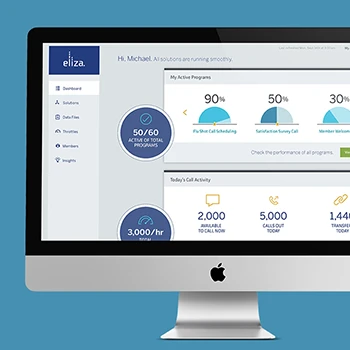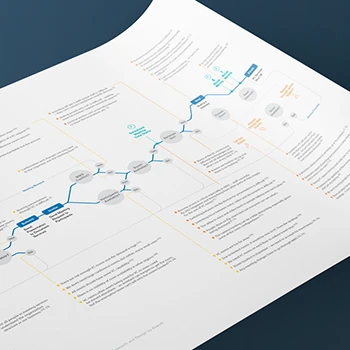What exactly is service experience design and why do we need it for our business?
Service experience design is a connected set of experiences that encompass brand, product, content, and service elements to deliver coherent, consistent, and enjoyable customer journeys. Unlike product design that focuses on individual features, service experience design creates holistic experiences that span multiple touchpoints and channels. Within our Experience Thinking framework, service design ensures all four quadrants work together seamlessly rather than creating fragmented customer experiences that damage relationships and business outcomes.
Tip: Focus on service experience design when your business involves multiple touchpoints, ongoing customer relationships, or complex service delivery systems.
How does service experience design differ from traditional product or UX design?
Service experience design takes the big picture view of experiences across brand, content, product, and service touchpoints while traditional UX design typically focuses on individual interface interactions. Service design addresses how customers move between products and content that make up the complete service experience. It includes human interactions, physical environments, operational processes, and technology systems working together to create connected customer journeys throughout the entire lifecycle.
Tip: Use service experience design when you need to coordinate multiple products, channels, or departments to create seamless customer experiences.
What business problems does service experience design solve most effectively?
Service experience design effectively addresses disconnected customer experiences, operational inefficiencies, brand-service misalignment, and customer retention challenges. It reveals where organizational silos create customer friction and identifies opportunities for differentiation through superior experience delivery. Service design also helps organizations adapt to market disruptions, integrate new technologies, and create scalable service delivery models that drive customer loyalty and business growth.
Tip: Focus service experience design efforts on your highest-value customer relationships where experience quality directly impacts retention and lifetime value.
What are the key components of effective service experience design?
Effective service experience design includes service architecture, service blueprints, journey design, experience specifications, and delivery support. Within Experience Thinking methodology, design encompasses brand experiences, content experiences, product experiences, and connecting experiences that link these elements together. Key components also include people, processes, technology, and business model elements that enable consistent service delivery across all customer touchpoints and lifecycle stages.
Tip: Start service experience design with service architecture to establish the foundational structure before designing specific customer journeys.
What role does foresight design play in service experience development?
Foresight design enhances service experience development by exploring how service delivery might need to evolve as customer expectations, technology capabilities, and market conditions change over time. Rather than just designing for current needs, foresight design helps create adaptive service architectures that remain relevant and competitive. This approach enables proactive service evolution and helps organizations anticipate future customer requirements rather than reacting to market changes.
Tip: Include scenario planning in service experience design to ensure your service architecture can adapt to different future conditions and customer behavior changes.
How does service experience design connect to business strategy and organizational goals?
Service experience design connects to business strategy by translating strategic objectives into tangible customer experiences that drive key performance indicators like satisfaction, retention, and revenue growth. Service design identifies which experience investments generate highest business returns and competitive advantages. Within Experience Thinking, service design informs strategic decisions across brand positioning, content strategy, product development, and operational excellence to ensure customer experiences align with business goals.
Tip: Map business objectives to specific service experience outcomes to ensure design efforts directly support strategic priorities and measurable results.
What service design methodology and process should we expect from professional design services?
Professional service experience design follows a four-phase methodology: Innovation (service discovery and opportunity identification), Strategy (service experience strategy and journey understanding), Design (service architecture and journey design), and Delivery (experience specification and implementation support). Each phase includes specific research techniques, design methods, and validation approaches. The process emphasizes iterative development, stakeholder collaboration, and customer validation throughout the design lifecycle.
Tip: Ensure the service design methodology includes both strategic planning and tactical implementation guidance rather than just conceptual frameworks.
What research methods support effective service experience design?
Service experience design research combines ethnographic approaches, stakeholder interviews, experience mapping, contextual inquiry, focus groups, and observational studies. Research focuses on understanding how customers move between products and content that make up service experiences, not just individual interactions. Mixed methods include attitude, perception, and behavior research to capture both functional and emotional aspects of service delivery. Research informs service blueprints, journey designs, and experience specifications.
Tip: Prioritize observational research methods that capture actual service behavior rather than relying solely on what customers say they do.
How do we capture customer needs and expectations across the complete service lifecycle?
Complete service lifecycle research requires longitudinal studies, lifecycle mapping, journey analysis, and stage-specific research across customer-user-client progression. Research captures needs evolution from initial awareness through advocacy stages, including onboarding, ongoing usage, support interactions, and relationship development. Within Experience Thinking framework, research ensures brand, content, product, and service elements align with customer expectations throughout the entire relationship lifecycle.
Tip: Conduct research at multiple lifecycle stages rather than just initial purchase or onboarding to understand evolving customer needs and service requirements.
What stakeholder involvement is necessary for successful service experience design?
Successful service experience design requires involvement from customer service, operations, marketing, IT, leadership, and front-line staff who deliver service experiences. Stakeholders provide operational insights, business constraints, strategic direction, and implementation capabilities. Customer involvement through research, testing, and feedback ensures designs meet actual needs. Cross-functional collaboration breaks down silos and creates shared ownership of service experience outcomes.
Tip: Include front-line service staff in design processes since they understand daily operational realities and customer pain points that executives might miss.
How do we design service experiences across multiple channels and touchpoints effectively?
Multi-channel service experience design requires understanding customer preferences for different touchpoints, designing seamless transitions between channels, and ensuring consistent experience quality across all interactions. Design includes channel-specific capabilities while maintaining unified service standards and brand expression. Experience Thinking methodology ensures brand, content, product, and service elements work together rather than competing across channels for customer attention and loyalty.
Tip: Map customer journeys across all channels to identify integration points where seamless handoffs are most critical for experience continuity.
What prototyping and validation methods work best for service experience concepts?
Service experience prototyping includes service staging, service walkthroughs, role playing, mock-ups, and service simulations that test human, product, and spatial aspects of service delivery. Validation methods include customer feedback sessions, pilot implementations, A/B testing of service approaches, and iterative refinement based on real-world performance. Prototyping helps validate service concepts before full implementation and reduces investment risk.
Tip: Use service staging to test complete customer scenarios rather than just individual touchpoints to validate end-to-end experience quality.
How do we balance innovation with practical implementation constraints in service design?
Balancing innovation with constraints requires understanding organizational capabilities, technology limitations, resource availability, and regulatory requirements while identifying opportunities for meaningful service improvements. Innovation focuses on customer value creation within realistic implementation boundaries. Service design includes phased implementation approaches that enable gradual service evolution rather than revolutionary changes that overwhelm organizational capacity and customer adaptation.
Tip: Design service innovations that build on existing organizational strengths while addressing specific customer pain points for higher implementation success rates.
What timeline should we expect for thorough service experience design projects?
Service experience design projects typically require 12-20 weeks including discovery, strategy, design, and delivery phases. Timeline depends on service complexity, number of touchpoints, stakeholder availability, and validation requirements. Complex service ecosystems or multi-channel experiences may require longer timelines. Each phase includes specific deliverables, stakeholder reviews, and validation activities. Rush timelines often result in superficial designs that miss critical service delivery considerations.
Tip: Plan for iterative design cycles and stakeholder feedback loops rather than linear progression to accommodate learning and refinement needs.
How do we align service experience design with current business objectives and competitive positioning?
Service experience design alignment begins with understanding business goals, competitive landscape, market positioning, and operational capabilities before developing design approaches. Design should directly support key performance indicators, customer satisfaction targets, and strategic differentiation goals. Experience Thinking methodology helps align service design across brand positioning, content strategy, product development, and operational excellence to ensure experiences create sustainable competitive advantages and measurable business value.
Tip: Start service design projects by identifying specific business outcomes that service experiences need to deliver rather than just improving customer satisfaction.
What organizational capabilities are needed to support service experience design implementation?
Service experience design implementation requires customer experience leadership, cross-functional collaboration skills, service delivery training, technology integration capabilities, and change management expertise. Organizations need service design thinking, customer empathy, operational flexibility, and continuous improvement mindsets. Capability building includes establishing service standards, performance measurement systems, and knowledge sharing mechanisms that sustain service experience quality over time.
Tip: Assess current organizational capabilities against service design requirements to identify skill gaps and training needs before beginning major service redesign initiatives.
How do service experience design insights inform resource allocation and investment decisions?
Service experience design insights inform investment decisions by revealing which service improvements generate highest customer value, operational efficiency, and competitive advantage. Design identifies quick wins, strategic initiatives, and areas requiring significant resource commitment. Cost-benefit analysis of design recommendations guides prioritization and budget allocation. Service design also helps justify innovation investments through demonstrated customer impact and business outcome projections.
Tip: Connect service design recommendations to specific business metrics and revenue opportunities to build compelling cases for service improvement investments.
What role does service experience design play in digital transformation and technology strategy?
Service experience design guides digital transformation by ensuring technology investments enhance rather than complicate customer experiences. Design identifies where automation, AI, and digital platforms can improve service delivery while maintaining human connection points that customers value. Technology strategy should support designed service experiences rather than driving experience design. Service design helps organizations avoid technology-first approaches that improve operations but worsen customer experiences.
Tip: Use service experience design to evaluate technology investments based on customer impact rather than just operational efficiency or technical capabilities.
How do we build business cases that justify investment in service experience design?
Business cases for service experience design should quantify potential improvements in customer lifetime value, retention rates, operational efficiency, and competitive positioning. Calculate costs of poor service experiences, customer churn, and missed opportunities that design could address. Include competitive analysis showing how superior service experiences create market advantages. ROI projections should reflect both customer satisfaction improvements and business outcome enhancements from better service delivery.
Tip: Include competitive differentiation analysis showing how service experience advantages create sustainable market positioning that justifies design investment.
What change management considerations are important for service experience design implementation?
Service experience design implementation requires culture change toward customer-centricity, staff training on new service standards, process redesign, and performance measurement alignment. Change management addresses resistance to new service approaches, builds stakeholder buy-in, and ensures sustainable adoption of design recommendations. Communication strategies help stakeholders understand service design benefits and their roles in implementation. Leadership commitment and ongoing support are critical for successful transformation.
Tip: Plan change management activities alongside service design development to ensure organizational readiness for implementation rather than treating change as an afterthought.
How does service experience design support long-term strategic planning and market positioning?
Service experience design supports strategic planning by revealing market opportunities, capability requirements, and differentiation possibilities for future competitive advantage. Design insights guide resource allocation, partnership decisions, and innovation priorities that position organizations for evolving customer needs. Long-term service design thinking enables proactive market adaptation rather than reactive responses to competitive pressures and changing customer expectations.
Tip: Use service experience design insights to identify strategic capabilities your organization needs to develop for future market leadership and customer loyalty.
How do service experience design concepts translate into operational improvements and staff training?
Service experience design concepts translate into operational improvements through service specifications, staff training programs, process redesign, and performance standards that reflect design insights. Training includes customer interaction protocols, service recovery procedures, and cross-functional collaboration approaches. Implementation requires systematic integration into existing operations and new service delivery standards. Staff empowerment and capability building ensure consistent service experience delivery across all touchpoints.
Tip: Create role-specific implementation guides that translate service design concepts into practical daily actions for different staff positions and responsibilities.
What service design patterns and best practices emerge from successful implementations?
Successful service experience design implementations reveal patterns like effective onboarding sequences, seamless handoff protocols, proactive communication frameworks, and service recovery strategies. Best practices include clear expectation setting, progress indicators, personalization opportunities, and consistent quality across touchpoints. Experience Thinking patterns ensure brand, content, product, and service elements reinforce rather than contradict each other throughout customer interactions and relationship development.
Tip: Document successful service design patterns from implementations as reusable templates for future service development and scaling across different business units.
How do we measure success and track improvement progress from service experience design initiatives?
Service experience design success measurement includes customer satisfaction improvements at specific journey stages, operational efficiency gains, staff performance indicators, and business impact metrics like retention and revenue. Journey-specific measures reveal whether design improvements create intended value. Regular measurement identifies areas needing additional refinement. Success tracking also includes qualitative feedback about service relationship quality and emotional connection improvements.
Tip: Establish baseline measurements for key service experience metrics before implementing design changes to accurately track progress and demonstrate ROI.
What technology and systems changes are typically needed to support designed service experiences?
Technology changes supporting service experience design include customer relationship management enhancements, communication system improvements, workflow automation tools, and customer feedback collection platforms. Technology should enable rather than constrain designed service experiences. Integration across systems ensures consistent customer treatment and efficient operations. Technology investments should focus on enhancing human service capabilities rather than replacing personal interactions that customers value.
Tip: Prioritize technology changes that directly enable designed service experiences rather than general system upgrades that don't connect to customer experience improvements.
How do we maintain service experience quality and consistency during scaling and growth?
Maintaining service experience quality during scaling requires standardized service patterns, comprehensive training programs, quality assurance processes, and performance monitoring systems. Scaling strategies include service design systems, operational playbooks, and cultural reinforcement mechanisms that preserve experience quality across locations and staff. Growth planning considers how service experiences will adapt to increased volume while maintaining customer relationship quality.
Tip: Build service design systems and training programs that can scale with organizational growth rather than trying to maintain quality through individual oversight.
What ongoing optimization and iteration approaches ensure service experiences remain competitive?
Ongoing service experience optimization requires continuous customer feedback collection, performance monitoring, competitive analysis, and iterative design improvements. Optimization includes regular service experience audits, staff feedback sessions, and customer journey updates that reflect changing needs and expectations. Competitive monitoring reveals emerging service standards and innovation opportunities. Regular design reviews ensure service experiences evolve rather than stagnate.
Tip: Establish regular service experience review cycles that combine customer feedback with competitive intelligence to identify optimization opportunities before they become urgent problems.
How do global and multicultural considerations affect service experience design implementation?
Global service experience design implementation must account for cultural differences in service expectations, communication styles, relationship preferences, and business practice variations. Cultural adaptation goes beyond language translation to include different concepts of time, hierarchy, personal interaction, and service relationship expectations. Effective global service design balances universal human needs with culture-specific service delivery approaches and local market requirements.
Tip: Collaborate with local market experts during service design implementation to ensure cultural adaptation enhances rather than compromises designed service experiences.
How does artificial intelligence enhance service experience design and delivery?
AI enhances service experience design through automated pattern recognition in customer behavior data, personalization at scale, predictive service delivery, and intelligent workflow optimization. Machine learning algorithms can identify service improvement opportunities, predict customer needs, and recommend optimal service approaches. However, AI should augment rather than replace human insight in understanding complex emotional and relational factors that drive service satisfaction and loyalty within designed experiences.
Tip: Use AI to enhance designed service experiences and human capabilities rather than trying to automate service relationships that customers value for emotional connection.
What role do analytics and behavioral data play in service experience design development?
Analytics and behavioral data provide quantitative foundations for service experience design by revealing actual customer patterns, service utilization, satisfaction correlations, and operational performance indicators. Data analysis identifies design priorities and validates qualitative insights from research and testing. Ongoing analytics track service experience performance and reveal areas needing design refinement. Integration of quantitative patterns with qualitative insights creates more robust service design decisions.
Tip: Combine analytics insights with qualitative research to understand both what customers do and why they behave that way during service interactions.
How do digital platforms and service management systems support designed experiences?
Digital platforms support designed service experiences through customer journey tracking, personalized service delivery, interaction history management, and automated workflow coordination. Service management systems enable consistent implementation of designed service standards across all touchpoints. Platform integration ensures service experiences remain connected and coherent regardless of how customers access services. Real-time monitoring helps maintain service quality and identify improvement opportunities.
Tip: Ensure platform capabilities directly support designed service experience requirements rather than forcing service design to conform to existing technology limitations.
What automation opportunities exist for service delivery without compromising designed human experiences?
Automation opportunities include routine task processing, information gathering, appointment scheduling, and initial service routing while preserving human interaction for relationship building and complex problem solving. Within Experience Thinking, automation should enhance designed service delivery rather than replace human elements that create emotional connection. Automation design should respect customer preferences and service relationship expectations identified through service experience design research.
Tip: Use service experience design insights to determine optimal balance between automated efficiency and human service elements that customers value most.
How do emerging technologies integrate with established service experience design principles?
Emerging technologies integrate with service experience design principles by enhancing service delivery capabilities while maintaining proven interaction patterns and relationship quality. Voice interfaces, IoT devices, and augmented reality should complement rather than disrupt designed service experiences. Technology integration requires additional validation to ensure new capabilities enhance rather than complicate successful service relationships and customer journey flows.
Tip: Test emerging technology implementations against your established service experience standards before full deployment to ensure consistency and quality.
What data privacy and security considerations are important in service experience design technology?
Service experience design technology must comply with privacy regulations, protect customer information, and maintain trust throughout all service interactions. Privacy considerations include data collection consent, information security, customer control over personal data, and transparent usage policies. Security measures should enhance rather than complicate designed service experiences. Trust building through responsible data practices becomes part of the overall service experience design strategy.
Tip: Work with legal and compliance departments early in service design technology planning to ensure privacy requirements enhance rather than constrain designed experiences.
How do we balance technological efficiency with personalized service experiences in design implementation?
Balancing efficiency with personalization requires technology architectures that enable mass customization rather than mass standardization of service experiences. Systems should support consistent core service delivery while allowing personalized variations that reflect designed service experience principles. Effective balance maintains operational efficiency while delivering relevant, personalized experiences that meet diverse customer needs identified through service experience design research and validation.
Tip: Implement flexible technology architectures that enable personalization of designed service approaches without creating operational complexity or compromising service quality standards.
How does service experience design drive organizational culture change toward customer-centricity?
Service experience design drives culture change by making customer experiences tangible and visible throughout the organization through service blueprints, journey maps, and experience specifications. Design creates shared understanding of customer needs that transcends departmental perspectives. Regular design reviews, customer story sharing, and experience-based performance metrics reinforce customer-centric thinking. Service design provides concrete frameworks for customer-focused decision making across all organizational levels.
Tip: Use service experience design artifacts like journey maps and service blueprints as communication tools in meetings to keep customer perspectives central to business discussions.
What training and capability building are needed to implement service experience design effectively?
Effective service experience design implementation requires customer empathy training, service design thinking development, cross-functional collaboration skills, and design methodology understanding. Training programs should cover service architecture, journey design, customer research interpretation, and implementation planning. Capability building includes establishing design review processes, customer feedback integration, and continuous improvement practices that maintain service experience quality and evolution over time.
Tip: Create hands-on training programs where staff practice applying service design principles to real business decisions rather than just learning theoretical concepts.
How does service experience design inform organizational structure and role development?
Service experience design informs organizational structure by revealing coordination requirements, skill needs, and accountability patterns needed for effective service delivery. Design may indicate needs for customer experience roles, service design capabilities, and cross-functional collaboration mechanisms. Organizational structure should support designed service delivery rather than functional optimization that creates customer experience gaps. Role development focuses on customer value creation capabilities.
Tip: Analyze service experience design requirements to identify organizational gaps where no one has clear responsibility for customer experience quality across touchpoints.
What role does service experience design play in business model innovation and strategic transformation?
Service experience design plays a central role in business model innovation by revealing new value creation opportunities, service delivery approaches, and customer relationship models. Design insights guide transformation from product-centric to service-centric business models. Service design helps organizations identify subscription models, platform strategies, and ecosystem approaches that create sustainable competitive advantages through superior customer experiences and relationship development.
Tip: Use service experience design insights to explore business model innovations that create recurring customer value rather than just improving existing service delivery.
How do service experience design initiatives support change management and transformation success?
Service experience design supports transformation by providing clear vision of future customer experiences, evidence for change necessity, and practical implementation guidance. Design creates shared understanding of transformation benefits through customer lens. Visual service design artifacts help stakeholders understand change impact and their roles in implementation. Design-driven transformation focuses on customer value creation rather than just operational efficiency or cost reduction.
Tip: Use service experience design visualizations to build transformation urgency and stakeholder commitment rather than relying solely on business case presentations.
What emerging trends are shaping the future of service experience design?
Emerging trends include AI-enhanced personalization, predictive service delivery, sustainability-focused service design, remote service capabilities, and ecosystem-based service models. Changing customer expectations, technology capabilities, and social values influence service design approaches. Foresight design principles help anticipate how these trends will affect service delivery requirements and customer relationship expectations, enabling proactive service evolution rather than reactive adaptation.
Tip: Monitor emerging service design trends and customer behavior changes that might require adaptation of your service experience design approach and capabilities.
How does service experience design contribute to innovation strategy and competitive advantage development?
Service experience design contributes to innovation by revealing unmet customer needs, emerging service requirements, and differentiation opportunities that traditional approaches might miss. Within Experience Thinking, design identifies innovation possibilities across brand, content, product, and service dimensions. Service design insights guide innovation investment priorities and validate concepts before development. Competitive advantage emerges from superior service understanding and execution rather than just better individual features or offerings.
Tip: Use service experience design insights to identify innovation opportunities where competitors are not meeting customer relationship and service needs effectively.
How do service experience design approaches evolve as markets and customer expectations change?
Service experience design approaches evolve through continuous monitoring of customer behavior changes, market trend analysis, competitive intelligence, and regular methodology updates capturing shifting expectations and contexts. Foresight design principles help anticipate design evolution rather than just react to changes. Evolution patterns often reflect broader societal shifts, technology adoption, generational changes, and new service delivery models affecting how customers interact with services across all industries.
Tip: Establish service design methodology review cycles that identify early signals of changing customer expectations and service delivery requirements before they become widespread market demands.
What advanced applications of service experience design can create breakthrough service innovations?
Advanced applications include predictive service design using customer data, real-time service optimization, ecosystem-based service architecture, and anticipatory customer experience delivery. Integration across service platforms enables coordinated experiences and proactive service innovation. Experience Thinking methodology ensures advanced applications enhance rather than complicate fundamental human relationships and value creation that drive customer loyalty and business success.
Tip: Focus advanced service design applications on enhancing customer relationship quality and problem-solving effectiveness rather than just technological sophistication or operational efficiency.
How does service experience design support platform strategy and ecosystem development?
Service experience design informs platform strategy by revealing integration requirements, partnership opportunities, and ecosystem architecture needs for comprehensive customer value delivery. Design shows where internal capabilities should be supplemented with external partnerships or platform solutions. Ecosystem design ensures service continuity and consistent experience quality across multiple service providers while maintaining customer relationship ownership and brand integrity.
Tip: Design service platforms and ecosystems based on customer journey needs and value creation rather than just operational convenience or cost reduction.
What role does service experience design play in sustainability and social responsibility initiatives?
Service experience design contributes to sustainability by revealing environmental impacts of different service delivery approaches, identifying resource efficiency opportunities, and integrating customer values regarding social responsibility. Design helps create services that align with customer sustainability expectations while achieving business objectives. Responsible service design considers broader social impacts, community value, and long-term sustainability beyond immediate customer satisfaction and business profit.
Tip: Include sustainability values and social impact considerations in service experience design to understand how these factors influence customer loyalty and business reputation.
How does service experience design prepare organizations for future customer behavior and market disruptions?
Service experience design prepares organizations for future challenges by establishing adaptive service capabilities, building customer insight infrastructure, and creating flexible service architectures that can evolve with changing needs. Foresight design approaches help anticipate service requirements and build resilient service systems. Preparedness includes scenario-based design, capability development, and innovation processes that enable rapid response to market disruptions and customer behavior changes.
Tip: Build service design flexibility and adaptation capabilities into your organization rather than just optimizing for current customer service patterns and market conditions.
What competitive intelligence can be gained from service experience design analysis and benchmarking?
Service experience design analysis reveals competitive advantages and vulnerabilities by comparing service delivery approaches, identifying differentiation opportunities, and understanding market positioning through customer experience lens. Competitive analysis shows where competitors excel or fail in service experience delivery. Market intelligence includes understanding industry service standards, emerging experience expectations, and innovation opportunities that create sustainable competitive positioning.
Tip: Conduct regular competitive service experience analysis to identify design opportunities where your organization can create meaningful differentiation and customer preference.
How does service experience design contribute to long-term organizational resilience and market leadership?
Service experience design contributes to organizational resilience by creating adaptive service capabilities, building deep customer understanding, and establishing innovation frameworks that enable sustained competitive advantage. Long-term design thinking helps organizations anticipate market changes, develop flexible service architectures, and maintain customer loyalty through changing conditions. Resilience includes capability building, culture development, and strategic planning based on service experience excellence rather than just operational efficiency.
Tip: Use service experience design as a foundation for organizational learning and adaptation capabilities rather than just improving current service delivery efficiency and customer satisfaction.












